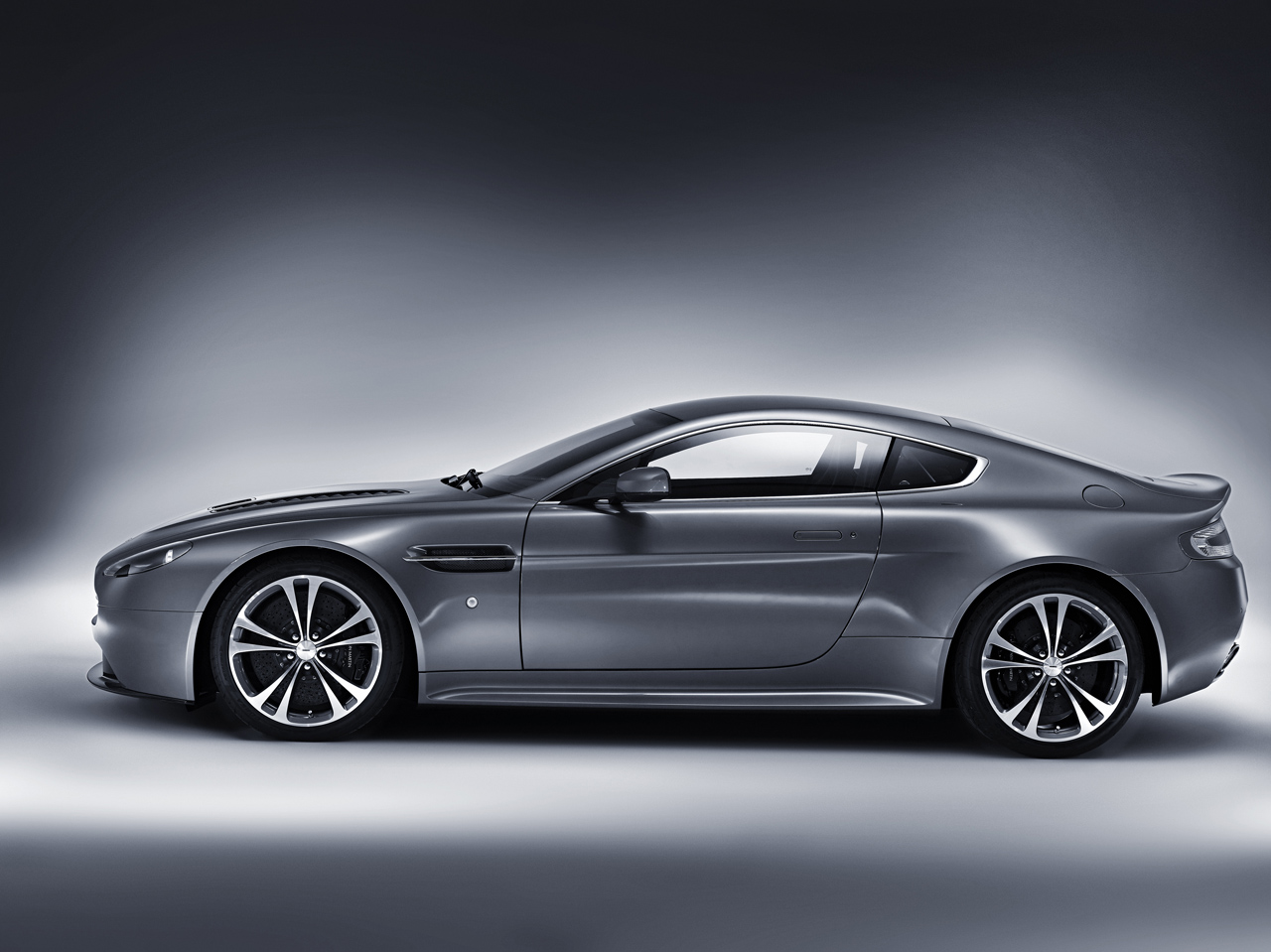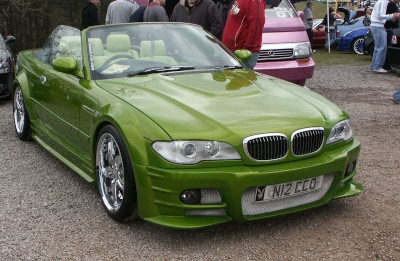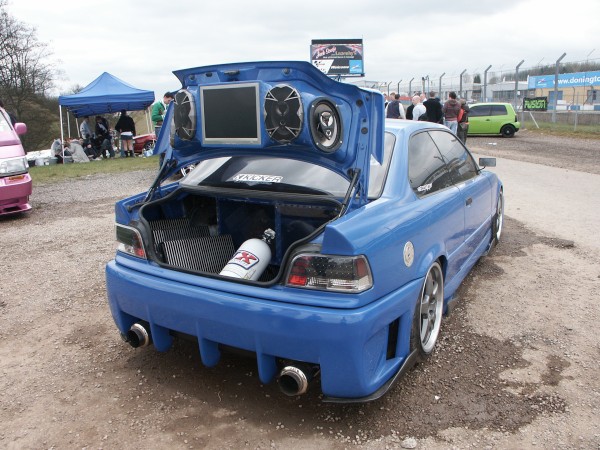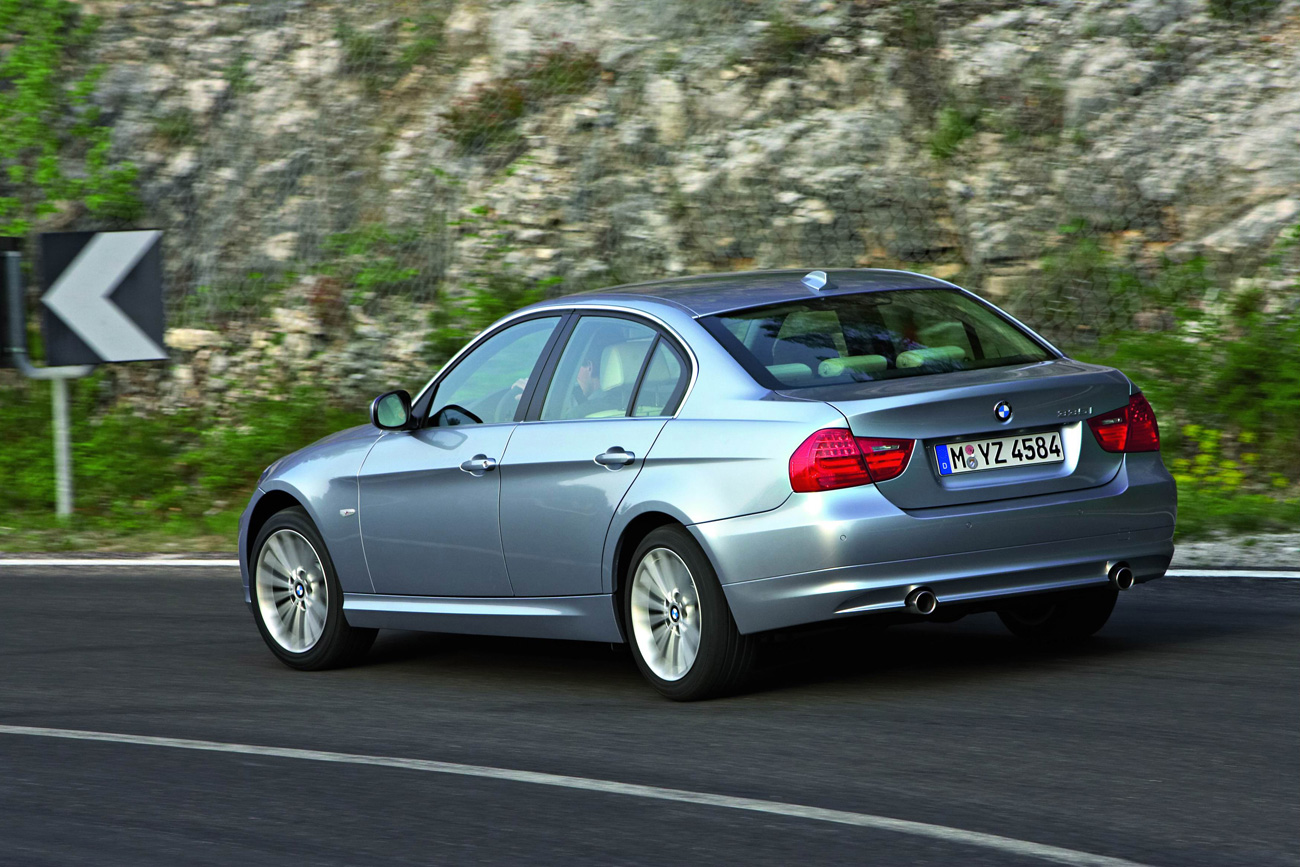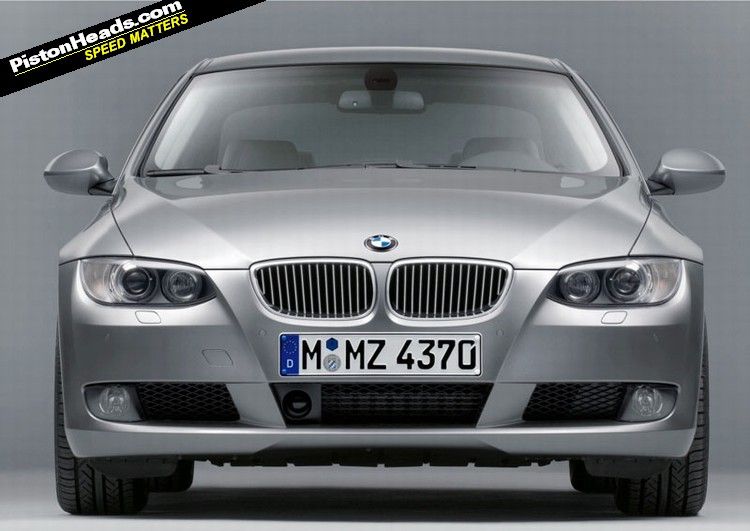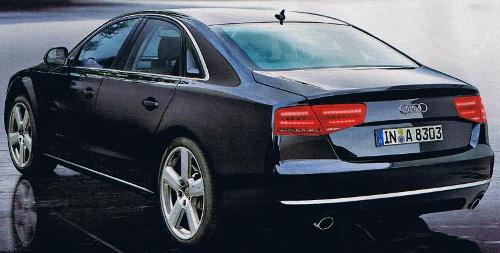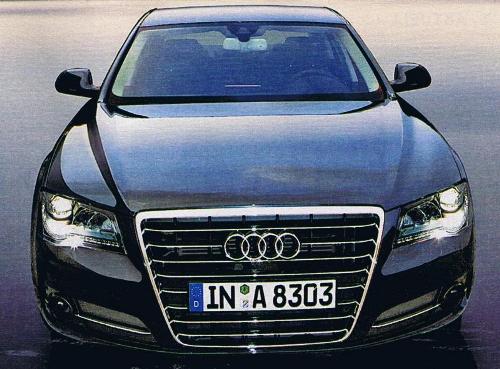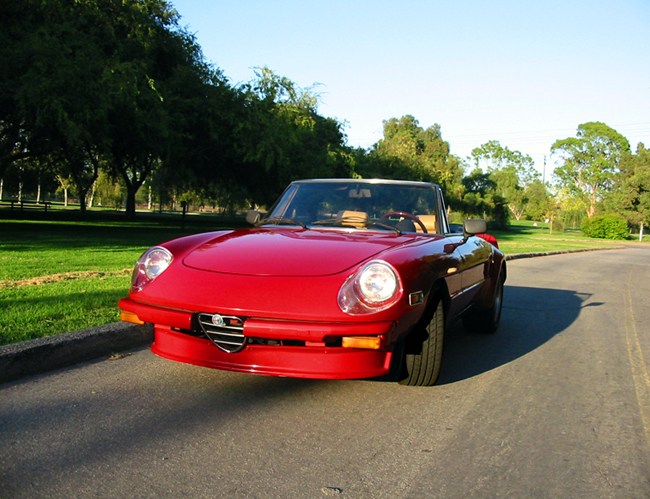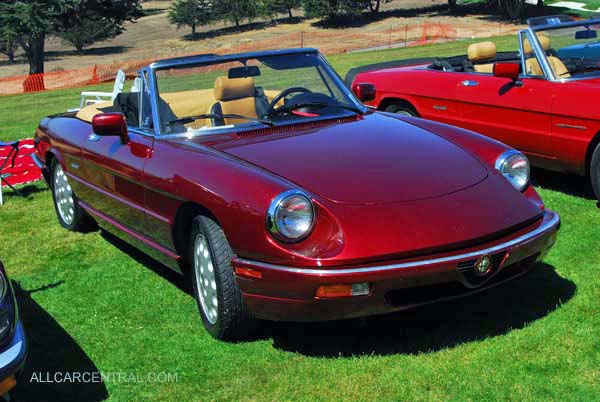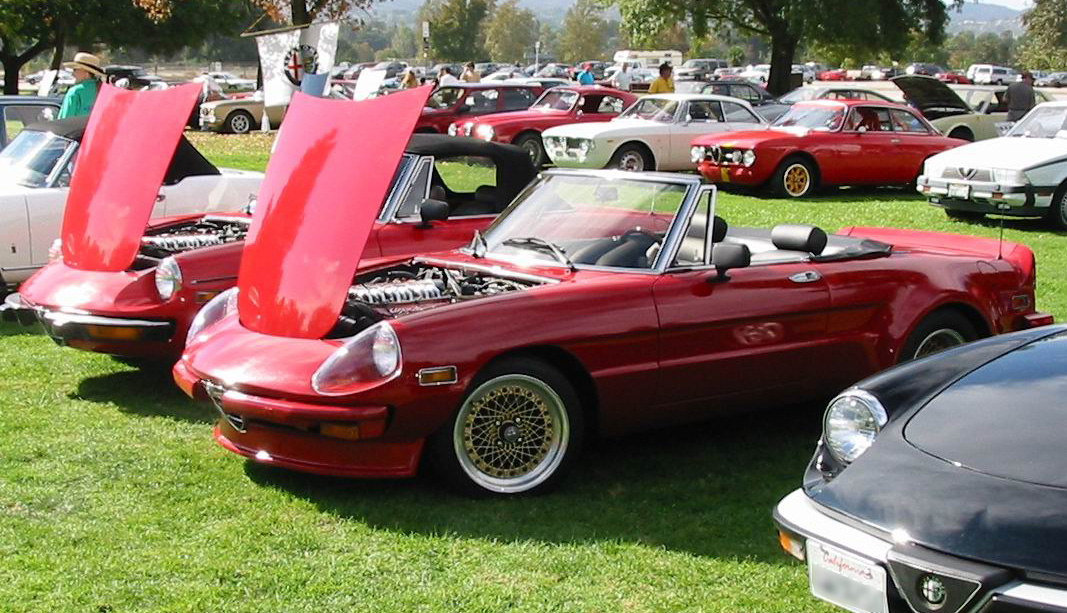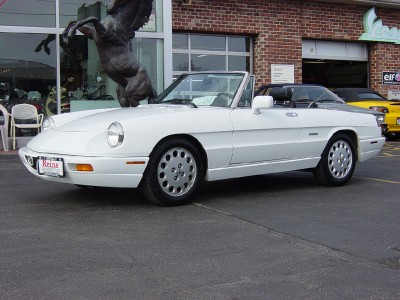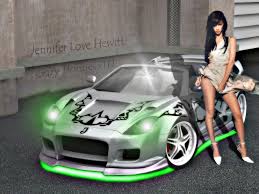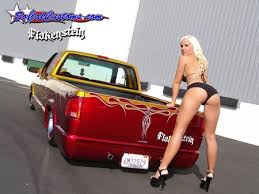|
|
|---|
Saturday, April 3, 2010
Friday, April 2, 2010
New York 2010: Mitsubishi hopes 2011 Outlander Sport

Let's just go on ahead and make that much needed volume leader. The great economic collapse of 2009 smashed Mitsubishi in the teeth with a much larger brick than most other manufacturers. Thinks have slightly improved, but their February sales were still down 10 percent, and from an already frighteningly low level. Obviously, something must be done.
Meet the 2011 Mitsubishi Outlander Sport, or as they're calling it in alphanumeric-loving Europe, the ASX. We've covered this particular small crossover pretty extensively already, so here's the U.S. spec deal. It's 15 inches shorter than the Outlander GT. Like its big brother, it gets magnesium paddle shifters. However, they are connected to a CVT instead of Mitsu's sweet dual-clutch gearbox. Now, no one has driven the Outlander Sport yet, and CVTs have gotten massively better in the last few years, so don't bunch your panties up quite yet.
The real upshot of that CVT is the Outlander Sport's 31 mpg highway figure, a right respectable number for a small crossover. In fact, that means the Outlander Sport is competitive with a small CUV we like a whole bunch, the new Hyundai Tucson. Besides the CVT, Mitsu has installed weight-saving plastic front fenders, electric power steering and has sculpted the Outlander Sport down to a admirably slippery 0.33 Cd. The Outlander Sport can also be shifted from front-wheel drive to all-wheel drive and yes, you will be able to order yours in this particularly vibrant shade of show car blue.
Labels:
2010,
2010 New York Auto Show,
cars,
Mitsubishi,
SUV
New York 2010: 2011 BMW Alpina B7 xDrive

We dig super sedans. You get 94 percent of the performance of a sports car (or there abouts) plus the ability to take a few friends along for the hair-raising ride. Also, cops don't seem to scrutinize big snazzy sleepers as much as they do bright yellow scissor-doored whatchamacall'em-ardos. It should come as no shock then that when we first heard about the new Alpina B7, we were pretty excited. When we then subsequently learned that an all-wheel drive version of BMW's sportiest big sedan was coming to the New York Auto Show, well, our excitement grew.
Then we saw the car in the flesh.
Let's just say we're now triple excited. A few pertinent stats, if we may. The 4.4-liter twin-turbo V8 found in a host of BMWs has been significantly improved to 500 horsepower (up by 100 hp over stock) and 516 pound-feet of torque (up by 66 pound-feet). The B7 is also more aerodynamic than your garden variety 7 Series, comes with zillion-spoke wheels (fine, twenty) and can hit 60 mph in 4.5 seconds. With the Alpina B7 xDrive, you can now toss AWD into that already frothy mix.
But the above stats aren't the crazy parts. It's the details that impress the most. For example, all four of the heavy-duty half shafts come out of the 7 Series High Security. The 60 to 0 mph braking distance is identical to a Porsche Turbo. That last bit is not an April Fools' joke, although it's somewhat mitigated by Alpina's saying, "that's cold braking distance." While not a stat per say, the AWD system is mechanically identical to other BMW xDrive systems, though Alpina has written their own software system, presumably for the better.
One last thing that's actually a little to complicated to explain: take a look at the center of the B7's wheel. You'll see that once you've slid the heraldry over, there's a keyhole. Now, if you zoom out, you'll notice no valve stems anywhere on the wheel. In other words, your tire pressure's locked in and can be adjusted to the tenth of a PSI.
[Source: BMW/Alpina]
Labels:
2010,
2010 New York Auto Show,
2011,
news,
Sports Cars
New York 2010: Hyundai Equus debuts in U.S.

Hyundai showed off its new Sonata Turbo and Sonata Hybrid yesterday at the New York Auto Show, two vehicles that should help keep the brand's mid-size sedan moving up the sales charts with a bullet. With March sales figures just trickling in, it looks like the Sonata is now the third best-selling mid-size sedan behind the Toyota Camry and Honda Accord. With its high level of equipment, style, quality and performance, it's not surprising to see this Korean doing well. Today in New York, the automaker showed how it can take that level of refinement found in the Sonata and its bigger brother, the Genesis, and ratchet it up another notch for a new flagship, the Hyundai Equus.
The Equus actually showed up last year in New York, sent over in world-market form to gauge customer interest. Apparently, it went swimmingly for Hyundai, as the production Equus will officially go on sale here towards the end of the year – well an oxymoronically named Equus, minus its signature hood ornament. Looking slightly less like the Lexus LS460 than the previous version of the car we'd seen, the U.S.-spec Equus has a shape that fits right in with upscale sedans from Buick, Lexus and Infiniti, if not Mercedes, BMW and Audi. Particularly at the rear fender, there is a swoop that doesn't quite speak luxury like the rest of the car though, reminding us more of a Dodge Charger than a Euro sedan. This production version though, particularly with its cleaner hood and grille, definitely has a refined look.
CEO John Krafcik wouldn't give us a firm number but did promise that the 385-horsepower sedan will come in with a base price somewhere between $50,000 and $60,000. The Equus will also launch a new luxury ownership experience being sold through select dealers in a dedicated area that will also include Genesis and Genesis Coupe. It will be available in four- or five-seat configurations with a mini fridge splitting the rear bucks on the rear twosome. Those backseats are also extremely comfortable, with power ventilation, heating and massage, plus a Maybach-like foot rest. Very nice.
[Source: Hyundai]
Labels:
2010,
2010 New York Auto Show,
2011,
cars,
Hyndai,
Sports Cars
New York 2010: Volkswagen Polo wins 2010 World Car of the Year award

Awards season is finally winding down with the 2010 World Car of the Year and World Performance Car of the Year being handed out this morning at the 2010 New York Auto Show. After whittling the fields down to three finalists in each category, the panel of 59 international journalists voted one last time to crown the World Car of the Year.
While the Toyota Prius, Volkswagen Polo and Mercedes-Benz E-Class were nominated, it was the Polo that took home the gold for 2010 World Car of the Year.
On the performance vehicle front, the nominees were the Audi R8 V10, Porsche 911 GT3 and Ferrari California, with the Audi winning top honors.
They also handed out a Design award for a group of finalists including the Citroen C3 Picasso, Kia Soul and Chevrolet Camaro. That honor went to the Camaro. (U-S-A! U-S-A!)
The Green category saw Volkswagen's line of diesel-powered BlueMotion vehicles beat out the Toyota Prius and Honda Insight hybrids
Labels:
2010,
2010 New York Auto Show,
Awards,
cars,
news,
volkswagen
New York 2010: Kia's 2011 Sportage

The original Kia Sportage was one of the vehicles that led the Korean automaker's initial charge into the American market. Those early SUVs (they were body-on-frame back then) were inexpensive and honest, but that's about the best thing you could say about them. After a near brush with extinction, Kia is a very different kind of automaker today. Like the rest of the company's recent introductions, the Sportage features crisp, aggressive styling that won't leave you embarrassed to be seen in one.
The new Sportage actually had its world debut at the Geneva Motor Show early this month, but the New York Auto Show is considered the crossover's U.S. coming out party, even though it actually showed up at the Atlanta show just recently. Like sister brand Hyundai's new Tucson, the American-spec model gets a new 176 horsepower variable valve timing 2.4-liter inline-four that beats the power and efficiency of the old 2.7-liter V6 with the buyer's choice of manual or automatic six-speed transmissions.
Later in the 2011 model year, the Sportage will finally get some real sport when it gets the new 2.0-liter turbocharged and direct injected inline four that's going into the Optima and Hyundai Sonata. A snazzy looking, 274 hp Sportage? What is this world coming to?
[Source: Kia]
New York 2010: 2011 Scion iQ

Well, well, well – it looks like Toyota's iQ is coming to the U.S. after all, only it will be (as reported) sporting a Scion badge. Makes sense. Especially as according to Scion, the world's smallest four-seater is aimed squarely at a very young demographic. Not just young, but hip and urban, too. In fact, we were told that the iQ represents a "new urbanism," and is a vehicle for a "progressive buyer." We can hear Glenn Beck's aneurysm from here.
As for details, the "mini-er, smart-er" iQ sports a 1.3-liter engine delivering its not-yet-divulged power through a CVT. Mileage should be in the high 30s, which is reasonable but far from overwhelming for such a small package. The iQ will also ship with stability control, traction control and ABS, as well as ten – count 'em – ten airbags, as well as the industry's first-ever rear window bag. As for now, that's the whole story. We'll update you on price, performance specs, and on-sale date when we know more.
Scion Unveils a New Dimension at the New York Auto Show with All-New 2011 iQ and tC Production Models
NEW YORK (March 31, 2010) – A New Dimension of Scion was unveiled today with two new production vehicles – the all-new 2011 iQ premium micro-subcompact and the second-generation 2011 tC sports coupe – at the New York International Auto Show. The tC is scheduled to arrive in dealerships later this fall, while the iQ will go on sale in early 2011.
"Scion prides itself on being an innovative brand with a lineup of iconic vehicles that set automotive trends," said Jack Hollis, vice president of Scion. "The iQ will define the premium micro-subcompact segment as the choice for new urbanites who want clever transportation without a sacrifice in style or new features."
"The all-new tC features styling that is both refined and aggressive, appealing to a sports coupe owner who wants to make a bold statement. The tC has had the youngest median age buyer in the industry, and with more power, superior driving dynamics, and increased fuel efficiency, that should remain the case with the new tC as well."
iQ Defines Premium Micro-Subcompact
Meeting the needs of a new trendsetting generation of urban drivers, the iQ succeeds at taking big ideas and concentrating them into a small package. Made possible by intelligent and functional packaging, the iQ is a small car that offers the functionality and comfort that drivers expect from a car twice its size.
The iQ's profile, defined by a strong and high beltline, glides from the large, stout headlamps, up the A-pillar, across the roof and wraps around the rear, emphasizing the iQ's geometric shape. Side mirrors with integrated turn signals accent the clean design.
The rear emphasizes the vehicle's modern style. Trapezoidal lines run toward the wheels, from the hatch to the bumper's rear diffuser-like accent, creating a substantial presence. With a 78.7-inch wheelbase and a unique suspension design – consisting of MacPherson struts up front, and a torsion beam rear suspension – the three-door hatchback can deftly maneuver through city traffic. In addition, its overall length of only 120.1-inches, width of 66.1-inches, and short front and rear overhangs create a confident stance that still allows the iQ to fit into virtually any urban parking scenario.
Engineering innovations like a compact air-conditioning unit, inverted front-mounted differential, and electronic power-steering system with compact steering column, all amount to significant decreases in front-end length. In addition, the iQ is equipped with a flat gas tank housed beneath the floor that reduces rear overhang.
The iQ's functional "3+1" seating equates to the world's smallest four-passenger vehicle. With the driver's and front-passenger's seats being slightly off set, this innovative seating arrangement allows for one adult behind the front passenger and a child, small package, or pet behind the driver. A first for Scion, extra-slim front seat backs are utilized to provide rear passengers with ample legroom. The rear seats are extremely versatile, featuring a 50/50 split and the ability to fold flat, creating enough storage to accommodate up to two golf bags.
The iQ is small in size but large on safety. Active safety features include Vehicle Stability Control (VSC), an anti-lock brake system (ABS) with Electronic Brake force Distribution (EBD), Brake Assist (BA) and Traction Control (TRAC).
The iQ will come standard with 10 SRS airbags, including the world's first rear-window curtain airbag. Other airbags include driver- and front-passenger airbags; driver- and front-passenger seat-mounted side airbags; side curtain airbags; driver- and front-passenger knee airbags; and a Scion-first driver seat-cushion airbag.
The 2011 iQ is equipped with a 1.3-liter, four-cylinder engine that produces over 90 horsepower and features the latest dual VVT-i, which allows it to be impressively efficient, providing a broader powerband yet requiring less fuel and generating fewer emissions.
The iQ's engine is combined with a Continuously Variable Transmission (CVT) that helps deliver smooth acceleration and excellent fuel efficiency. The iQ will be rated as an Ultra Low Emission Vehicle (ULEV-II), and it is expected to achieve a combined fuel economy in the high 30s, comparable to similar vehicles that feature less passenger and cargo capacity.
The iQ comes standard with a six-speaker audio system and is available with multiple audio head units for various degrees of audiophiles. All iQs will be outfitted with USB and auxiliary ports, allowing personal devices to be easily integrated into the car. Steering-wheel-mounted controls command the audio system to adjust volume and shuffle through music sources such as CD, AM/FM, auxiliary input, or a library from your iPod® or other USB device.
All-New tC Sports Coupe Adds Power, Performance
Launched in 2004, the tC quickly became Scion's top-selling vehicle, at the same time attracting the youngest buyer in the entire industry. Six years later, the second-generation tC emerges with an aggressive new look, increased driving performance, and a more premium feel.
Enhanced performance is accomplished in the second-generation tC with an all-new 2.5-liter inline four-cylinder engine with dual VVT-i that generates 180 horsepower, 19 more than the previous model, and 11 additional lbs.-ft of torque. In addition to increases in power, the new engine delivers an increase in fuel economy all while lowering emissions. Performance is further improved and heard through a new intake manifold design and a sport-tuned exhaust system that delivers a bold and aggressive sound.
The tC features two all-new transmissions: the six-speed manual transmission has improved shift-feel and adds to the car's already fun-to-drive character, and a new six-speed automatic gains two gears along with sequential-shift.
The 2011 tC enters its second-generation riding on a new platform, including a specially tuned MacPherson strut front-suspension and a double-wishbone rear-suspension that rides lower than the previous model. Larger 18-inch aluminum-alloy wheels are wrapped in wider tires, giving the tC a broader stance and elevated handling characteristics. The new model also comes standard with larger 16-inch disc brakes on all corners. A new performance-tuned electronic power-steering system provides the driver a confident feel that is more in-tune with the road. The elements brought together in the new chassis result in a premium performance that expands the tC into a new dimension of driving enjoyment.
The all-new design of the 2011 tC projects a bolder and more aggressive stance. Important design cues like the helmet-inspired cabin shape were adopted from the Calty-designed Scion FUSE concept, which was unveiled at the 2006 New York Auto Show. The protruding fender flares amplify its wider, lower stance and are aggressively complemented by a sleek front grille and projector headlamps. The shape of the rear taillights flow cleanly into the overall shape of the trunk.
Inside, a driver-focused cockpit starts with a sporty new three-spoke steering wheel that features a flat bottom and a new shape that offers a confident grip. Front seats feature robust bolsters that provide secure positioning while still offering spaciousness and comfort. The instrument-panel, gauge cluster and center-console all face inward in a V-shape, making controls easily accessible.
Overall, the cabin has been lengthened for a more comfortable passenger experience with increased versatility. Utility is enhanced with reclining rear seats that split 60/40, providing more storage capacity. The panoramic moonroof remains standard in the new tC.
The new tC comes standard with an AM/FM/CD/USB audio system that features eight speakers. As with all Scion models, steering-wheel-mounted controls allow the driver to easily navigate through all of their music.
The new tC is also reinforced with key safety features and is expected to achieve top safety ratings. In addition to standard Anti-lock Brakes (ABS), the new tC also gains standard Vehicle Stability Control (VSC), traction control (TRAC), Electronic Brake Force Distribution (EBD) and Brake Assist (BA). Active front-headrests and eight airbags are also standard, including both driver and front-passenger knee airbags.
SCION iQ and tC
PRELIMINARY SPECIFICATIONS
2011 SCION iQ
POWERTRAIN
Engine: 1.3-liter, 4-cylinder with Dual VVT-i
Drivetrain: Front-wheel drive
Transmission: Continuously Variable Transmission (CVT)
DIMENSIONS (inches)
Overall Length: 120.1
Overall Width: 66.1
Overall Height: 59.1
Wheelbase: 78.7
Seating Capacity: 4
2011 SCION tC
POWERTRAIN
Engine: 2.5-liter, 4-cylinder with Dual VVT-i
Drivetrain: Front-wheel drive
Transmission: 6-speed M/T or 6-speed A/T with Sequential-Shift
DIMENSIONS (inches)
Overall Length: 174.0
Overall Width: 70.7
Overall Height: 55.7
Wheelbase: 106.3
Seating Capacity: 5
Labels:
2010,
2010 New York Auto Show,
cars,
news,
Toyota
New York 2010: Scion reveals better looking, more powerful 2011 tC

The big reveal for Scion at the 2010 New York Auto Show is staring you square in the face. Meet the 2011 tC. Scion describes the car as defining "refined aggression." They called it, "masculine," too. Even though the new car borrows fairly heavily from the 2006 Fuse concept (not to mention the outgoing tC), our collective jury is still out on the refined aggression part. But we'll go ahead and agree that the new model does indeed look more masculine, which is good for Scion, as the tC demographic not only skews young (most youthful in the industry it turns out), but very male as well.
As for what's new, the engine is now a 2.5-liter I-4, up from 2.4 liters. Power is up as well. The new tC ships with a respectable 180 horsepower and 173 pound-feet of torque. That's plus 19 ponies and 11 pound feet. The suspension is now "sport tuned" and the power steering is electronic, which Scion assured us better allows the engineers to dial in more steering feel. Uh-huh.
The new tC also gets better gas mileage than the previous car (no word yet on exactly how much better) and comes with two new transmissions. There's a six-speed automatic that features sequential-shift (Scion-speak for a manual shift mode) as well asa six-speed manual that promises more refined shifting than the old five-speed.
Other goodies include 18-inch wheels and larger tires, bigger brake rotors (Scion claimed 16-inch rotors front and back during the press conference, but that's... insane) and a flat-bottom steering wheel. The tC has been our favorite Scion ever since Scion replaced the fist-gen xB with the fatter second-gen model.
Scion Unveils a New Dimension at the New York Auto Show with All-New 2011 iQ and tC Production Models
NEW YORK (March 31, 2010) – A New Dimension of Scion was unveiled today with two new production vehicles – the all-new 2011 iQ premium micro-subcompact and the second-generation 2011 tC sports coupe – at the New York International Auto Show. The tC is scheduled to arrive in dealerships later this fall, while the iQ will go on sale in early 2011.
"Scion prides itself on being an innovative brand with a lineup of iconic vehicles that set automotive trends," said Jack Hollis, vice president of Scion. "The iQ will define the premium micro-subcompact segment as the choice for new urbanites who want clever transportation without a sacrifice in style or new features."
"The all-new tC features styling that is both refined and aggressive, appealing to a sports coupe owner who wants to make a bold statement. The tC has had the youngest median age buyer in the industry, and with more power, superior driving dynamics, and increased fuel efficiency, that should remain the case with the new tC as well."
iQ Defines Premium Micro-Subcompact
Meeting the needs of a new trendsetting generation of urban drivers, the iQ succeeds at taking big ideas and concentrating them into a small package. Made possible by intelligent and functional packaging, the iQ is a small car that offers the functionality and comfort that drivers expect from a car twice its size.
The iQ's profile, defined by a strong and high beltline, glides from the large, stout headlamps, up the A-pillar, across the roof and wraps around the rear, emphasizing the iQ's geometric shape. Side mirrors with integrated turn signals accent the clean design.
The rear emphasizes the vehicle's modern style. Trapezoidal lines run toward the wheels, from the hatch to the bumper's rear diffuser-like accent, creating a substantial presence. With a 78.7-inch wheelbase and a unique suspension design – consisting of MacPherson struts up front, and a torsion beam rear suspension – the three-door hatchback can deftly maneuver through city traffic. In addition, its overall length of only 120.1-inches, width of 66.1-inches, and short front and rear overhangs create a confident stance that still allows the iQ to fit into virtually any urban parking scenario.
Engineering innovations like a compact air-conditioning unit, inverted front-mounted differential, and electronic power-steering system with compact steering column, all amount to significant decreases in front-end length. In addition, the iQ is equipped with a flat gas tank housed beneath the floor that reduces rear overhang.
The iQ's functional "3+1" seating equates to the world's smallest four-passenger vehicle. With the driver's and front-passenger's seats being slightly off set, this innovative seating arrangement allows for one adult behind the front passenger and a child, small package, or pet behind the driver. A first for Scion, extra-slim front seat backs are utilized to provide rear passengers with ample legroom. The rear seats are extremely versatile, featuring a 50/50 split and the ability to fold flat, creating enough storage to accommodate up to two golf bags.
The iQ is small in size but large on safety. Active safety features include Vehicle Stability Control (VSC), an anti-lock brake system (ABS) with Electronic Brake force Distribution (EBD), Brake Assist (BA) and Traction Control (TRAC).
The iQ will come standard with 10 SRS airbags, including the world's first rear-window curtain airbag. Other airbags include driver- and front-passenger airbags; driver- and front-passenger seat-mounted side airbags; side curtain airbags; driver- and front-passenger knee airbags; and a Scion-first driver seat-cushion airbag.
The 2011 iQ is equipped with a 1.3-liter, four-cylinder engine that produces over 90 horsepower and features the latest dual VVT-i, which allows it to be impressively efficient, providing a broader powerband yet requiring less fuel and generating fewer emissions.
The iQ's engine is combined with a Continuously Variable Transmission (CVT) that helps deliver smooth acceleration and excellent fuel efficiency. The iQ will be rated as an Ultra Low Emission Vehicle (ULEV-II), and it is expected to achieve a combined fuel economy in the high 30s, comparable to similar vehicles that feature less passenger and cargo capacity.
The iQ comes standard with a six-speaker audio system and is available with multiple audio head units for various degrees of audiophiles. All iQs will be outfitted with USB and auxiliary ports, allowing personal devices to be easily integrated into the car. Steering-wheel-mounted controls command the audio system to adjust volume and shuffle through music sources such as CD, AM/FM, auxiliary input, or a library from your iPod® or other USB device.
All-New tC Sports Coupe Adds Power, Performance
Launched in 2004, the tC quickly became Scion's top-selling vehicle, at the same time attracting the youngest buyer in the entire industry. Six years later, the second-generation tC emerges with an aggressive new look, increased driving performance, and a more premium feel.
Enhanced performance is accomplished in the second-generation tC with an all-new 2.5-liter inline four-cylinder engine with dual VVT-i that generates 180 horsepower, 19 more than the previous model, and 11 additional lbs.-ft of torque. In addition to increases in power, the new engine delivers an increase in fuel economy all while lowering emissions. Performance is further improved and heard through a new intake manifold design and a sport-tuned exhaust system that delivers a bold and aggressive sound.
The tC features two all-new transmissions: the six-speed manual transmission has improved shift-feel and adds to the car's already fun-to-drive character, and a new six-speed automatic gains two gears along with sequential-shift.
The 2011 tC enters its second-generation riding on a new platform, including a specially tuned MacPherson strut front-suspension and a double-wishbone rear-suspension that rides lower than the previous model. Larger 18-inch aluminum-alloy wheels are wrapped in wider tires, giving the tC a broader stance and elevated handling characteristics. The new model also comes standard with larger 16-inch disc brakes on all corners. A new performance-tuned electronic power-steering system provides the driver a confident feel that is more in-tune with the road. The elements brought together in the new chassis result in a premium performance that expands the tC into a new dimension of driving enjoyment.
The all-new design of the 2011 tC projects a bolder and more aggressive stance. Important design cues like the helmet-inspired cabin shape were adopted from the Calty-designed Scion FUSE concept, which was unveiled at the 2006 New York Auto Show. The protruding fender flares amplify its wider, lower stance and are aggressively complemented by a sleek front grille and projector headlamps. The shape of the rear taillights flow cleanly into the overall shape of the trunk.
Inside, a driver-focused cockpit starts with a sporty new three-spoke steering wheel that features a flat bottom and a new shape that offers a confident grip. Front seats feature robust bolsters that provide secure positioning while still offering spaciousness and comfort. The instrument-panel, gauge cluster and center-console all face inward in a V-shape, making controls easily accessible.
Overall, the cabin has been lengthened for a more comfortable passenger experience with increased versatility. Utility is enhanced with reclining rear seats that split 60/40, providing more storage capacity. The panoramic moonroof remains standard in the new tC.
The new tC comes standard with an AM/FM/CD/USB audio system that features eight speakers. As with all Scion models, steering-wheel-mounted controls allow the driver to easily navigate through all of their music.
The new tC is also reinforced with key safety features and is expected to achieve top safety ratings. In addition to standard Anti-lock Brakes (ABS), the new tC also gains standard Vehicle Stability Control (VSC), traction control (TRAC), Electronic Brake Force Distribution (EBD) and Brake Assist (BA). Active front-headrests and eight airbags are also standard, including both driver and front-passenger knee airbags.
SCION iQ and tC
PRELIMINARY SPECIFICATIONS
2011 SCION iQ
POWERTRAIN
Engine: 1.3-liter, 4-cylinder with Dual VVT-i
Drivetrain: Front-wheel drive
Transmission: Continuously Variable Transmission (CVT)
DIMENSIONS (inches)
Overall Length: 120.1
Overall Width: 66.1
Overall Height: 59.1
Wheelbase: 78.7
Seating Capacity: 4
2011 SCION tC
POWERTRAIN
Engine: 2.5-liter, 4-cylinder with Dual VVT-i
Drivetrain: Front-wheel drive
Transmission: 6-speed M/T or 6-speed A/T with Sequential-Shift
DIMENSIONS (inches)
Overall Length: 174.0
Overall Width: 70.7
Overall Height: 55.7
Wheelbase: 106.3
Seating Capacity: 5
Labels:
2010,
2010 New York Auto Show,
2011,
cars,
Sports Cars,
Toyota
Subscribe to:
Posts (Atom)






















